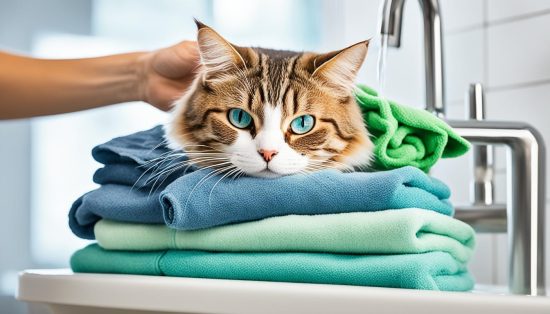How Do Cats See? Understanding Feline Vision Abilities
How do cats see? Uncover the secrets of feline vision – from night vision to color perception and their impressive visual field.
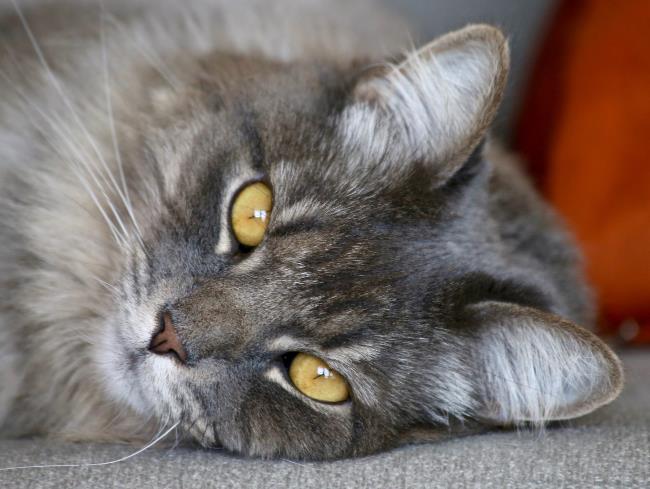
Did you know that cats can see up to 12 times better in low-light conditions than humans? This remarkable ability is just one of the many fascinating differences between feline and human vision. How Do Cats See? By day, cats may enjoy lounging in sunbeams, but come twilight, they transform into fierce hunters ready to stalk their prey. A closer look at how cats’ eyes work and why reveals a fascinating glimpse into their wild roots.
Cats’ eyes differ from humans in several ways, allowing them superior hunting abilities. Cats have a much larger cornea, vertical pupils, a tapetum lucidum, and more rod photoreceptors than humans, giving them enhanced vision in low-light conditions. Understanding feline vision can help pet owners select toys and activities that safely bring out their cat’s inner hunter.
Cat Eye Anatomy

The remarkable feline eye is a complex and highly specialized organ engineered to excel in the cat’s natural environment. Let’s delve into the key anatomical features that grant cats their superior visual capabilities compared to humans. The cat’s eye anatomy begins with the cornea, a clear, curved dome that covers the front of the eye. This structure plays a crucial role in refracting and focusing light, allowing more light to enter the eye and enhancing the cat’s low-light vision.
The cat’s eye structure features an iris, the colored part of the eye that controls the amount of light reaching the retina. Cats’ irises have the remarkable ability to expand and contract their vertical pupils, regulating light exposure for optimal vision in varying conditions. The pupil, the black opening at the center of the iris, acts as a gateway for light entering the feline eye parts. In dim light, the pupil dilates to allow more light to reach the retina, while in bright light, it constricts to protect the eye from excessive illumination.
Situated behind the iris, the lens in a cat’s eye changes shape to help focus light onto the retina, enabling clear vision at varying distances. This dynamic lens adaptation is a key feature of the cat’s eye anatomy. The retina, located at the back of the eye, contains the light-sensitive rod and cone photoreceptors that convert light into electrical signals, which are then transmitted to the brain for visual processing. The cat eye structure boasts a higher concentration of rod cells, enhancing their low-light vision capabilities.
One of the most distinctive features of the feline eye parts is the tapetum lucidum, a reflective layer situated behind the retina. This structure reflects light back through the retina, effectively doubling the light exposure and improving vision in dim environments.
Cat Vision vs. Human Vision
The remarkable differences between feline and human eye anatomy have a profound impact on how cats and humans perceive the world. From the size of the cornea to the structure of the pupil, these anatomical distinctions give cats a distinct advantage when it comes to low-light vision and motion detection.
One key difference is the cats’ much larger cornea, which allows more light to enter their eyes. This, combined with the presence of a reflective membrane called the tapetum lucidum behind the retina, enhances their sensitivity to light and enables them to see significantly better in dim conditions. In contrast, humans lack this specialized structure, making them less equipped for navigating in low light.
Another notable difference lies in the shape of the pupil. Whereas human pupils are round, feline pupils are vertical, allowing for better constriction and improved depth perception – crucial abilities for their hunting behaviors. This vertical pupil design, along with the cats’ more rod-dominant retinas, prioritizes motion detection over color perception, making them 10-12 times better than humans at identifying movement in low-light environments.
Additionally, the position of the lens in a cat’s eye, situated closer to the retina, creates a brighter image, further enhancing their visual acuity. These anatomical variations demonstrate how the feline visual system is uniquely adapted to thrive in the dimly lit conditions their ancestors relied upon for successful hunting.
What Do Cats See?
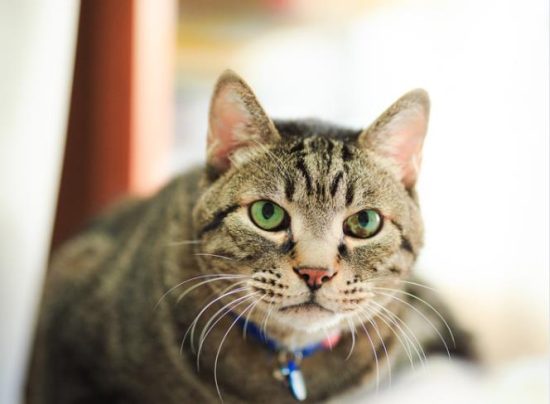
Kittens are born with poor vision, gradually developing adult eyesight within a few months. As they mature, cats’ visual capabilities reveal significant differences from human perception, providing them with unique advantages for hunting and navigating their environments.
Visual Acuity
Cat visual acuity ranges from 20:100 to 20:200, meaning they can see clearly from 20 feet away what the average human can see from 100-200 feet away. However, a recent study found cat visual acuity to be 20:30, closer to human levels. This suggests cats may have better visual acuity than previously believed, though their hunting skills still rely more on motion detection than precise focus.
Visual Field
Cats have a visual field of 200 degrees, compared to 180 degrees in humans. This wider field of view helps them detect motion in their peripherals, which is crucial for hunting and avoiding predators. Cats can more easily spot potential prey or threats moving in their side vision, giving them a significant advantage over their human companions.
Can Cats See in the Dark?
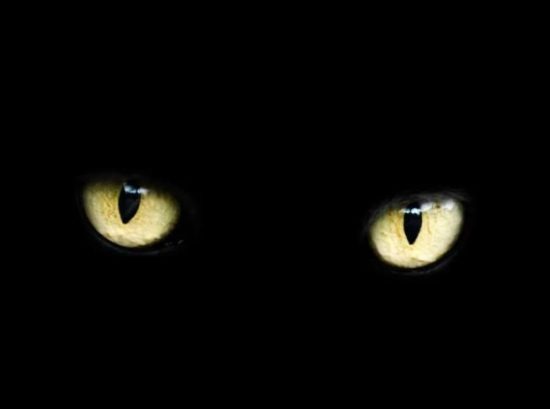
Cats don’t have true night vision, but they can see significantly better in low light conditions than humans. Estimates suggest cats can see 5.5 to 7 times better than humans in dim light, though not complete darkness. This is due to their larger corneas, more rod photoreceptors, and the reflective tapetum lucidum behind the retina, all of which enhance their cat night vision and ability to see well in low light.
The tapetum lucidum is a reflective layer located behind the retina, which bounces light back to the photoreceptors, allowing cats to make the most of the limited light available. This, combined with their vertical slit-like pupils that can open wide to let in more light, gives cats a significant advantage over humans regarding how well cats see in low light.
While cats may be unable to see in total darkness, their superior cat night vision and low-light vision capabilities make them well-equipped to hunt and navigate their environments in the twilight hours and beyond. This evolutionary adaptation has served felines well, allowing them to thrive as skilled nocturnal predators.
Can Cats See Color?
While cats have fewer cones than humans, their dichromatic color vision allows them to perceive yellows and blues. However, they struggle to distinguish red and green hues, which appear as similar shades of gray to their eyes. This is in contrast to human trichromatic vision, which enables us to see a wider range of colors.
Though color perception is less crucial for cats, who are more attuned to motion and contrast, they may show a preference for toys in blue and yellow hues. These colors tend to stand out more vividly to their unique cat color vision, potentially piquing their interest and sparking their innate hunting instincts.
| Vision Characteristic | Humans | Cats |
|---|---|---|
| Color Vision Type | Trichromatic | Dichromatic |
| Color Perception | Wide range of colors | Primarily see yellows and blues, struggle with reds and greens |
| Importance of Color | High | Moderate, motion and contrast are more important |
Are Cats Nearsighted or Farsighted?
The vast majority of cats are emmetropic, meaning their cat eyesight focuses correctly. However, some may be slightly farsighted or nearsighted. Cats can clearly focus on objects approximately 10 inches or more away; any closer, and the object becomes blurry. This is similar to a 45-year-old human’s vision, as cats tend to become more feline near and far sightedness with age.
Interestingly, a cat’s cat vision range and ability to detect nearby objects and prey is enhanced by their whiskers. These sensitive tactile sensors help compensate for cats’ limited close-up vision, allowing them to navigate their environment and hunt effectively.
How Do Cats See?
Cats rely more on motion detection and peripheral vision than precise focus, so they excel at spotting quick movements that could be potential prey. Their specialized ability to make rapid eye movements allows them to easily track and follow moving objects. Cats have an instinctive urge to chase anything that moves in their peripheral vision, which served their hunting ancestors well.
The cat’s visual processing is tailored for hunting, with a heightened sensitivity to movement and a broad field of view. Their cat-hunting vision lets them quickly detect and focus on prey, even in low-light conditions. By understanding how cats perceive the world and their cat visual processing capabilities, pet owners can better cater to their feline companions’ natural behaviors and needs.
Cats’ exceptional cat hunting vision results from their unique eye anatomy and visual adaptations. Their large corneas, vertical pupils, and reflective tapetum lucidum work together to enhance their ability to detect even the slightest movements in their environment. This combination of features gives cats a significant advantage when it comes to locating and tracking their next meal.
Signs of Vision Problems in Cats
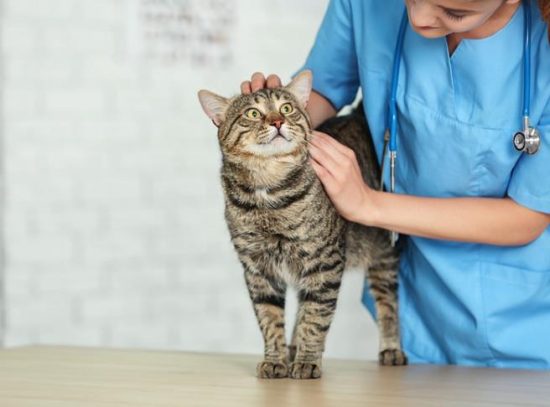
Pet owners should be vigilant for signs of vision issues in their feline companions, including reluctance to jump, bumping into objects, cloudy eyes, and permanently dilated pupils. These indicators may suggest underlying cat vision issues, signs of vision loss in cats, or other diagnosing cat eye problems. By recognizing these signs early, pet owners can work closely with their veterinarians to identify and address any vision-related concerns.
Observing Cat’s Movement
Closely monitoring a cat’s movements and behavior within the home environment can provide valuable insights into their vision capabilities. Owners should take note if their cat appears hesitant or cautious when navigating familiar spaces, or if they seem to bump into furniture or other obstacles more frequently than usual.
Checking Peripheral Vision
Veterinarians can assess a cat’s peripheral vision by observing their blink reflex in response to movement on the edges of their visual field. This helps determine if the cat is able to effectively detect and respond to stimuli in their peripheral vision, which is crucial for their natural hunting instincts.
Testing Retina Reflexes
Another diagnostic tool used by veterinarians is shining a light directly into the cat’s eyes to evaluate their retina reflexes. This allows the vet to check for any abnormalities or impairments in the cat’s visual processing abilities.
Measuring Eye Pressure
Utilizing tonometry, a veterinarian can measure the pressure within a cat’s eyes, which may indicate the presence of vision-affecting diseases such as glaucoma or cataracts. This non-invasive procedure provides valuable insights into the overall health and function of the cat’s visual system.
FAQs on how do cats see
What does a cat’s vision look like?
Cats have a much larger cornea, vertical pupils, a tapetum lucidum, and more rod photoreceptors than humans, allowing them superior vision in low-light conditions and enhanced motion detection.
What do cats see when they look at humans?
Cats have dichromatic color vision, allowing them to see yellows and blues, but have difficulty distinguishing red and green, which appear as similar shades of gray to them.
Do cats have good eyesight?
Cats have visual acuity ranging from 20:100 to 20:200, meaning they can see clearly from 20 feet away what the average human can see from 100-200 feet away. However, a recent study found cat visual acuity to be 20:30, closer to human levels.
How do cats see at night?
Cats can see 5.5 to 7 times better than humans in dim light due to their larger corneas, more rod photoreceptors, and the reflective tapetum lucidum behind the retina, which enhance their light sensitivity.
Are cats okay in the dark?
Cats don’t have true night vision, but they can see significantly better in low-light conditions than humans. They can’t see in complete darkness, but their visual system is optimized for hunting and navigating in twilight and night conditions.
How do cats see?
Cats have a much wider visual field of 200 degrees, compared to 180 degrees in humans, which helps them detect motion in their peripherals, which is crucial for hunting. They rely more on motion detection and peripheral vision than precise focus.
Can cats see color?
Cats have fewer cones than humans, resulting in dichromatic color vision that allows them to see yellows and blues but has difficulty distinguishing red and green, which appear as similar shades of gray.



